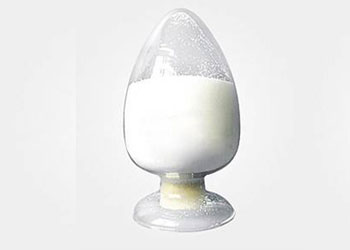Water soluble resin: Polyethylene Oxide properties and uses
What are the properties of Polyethylene Oxide?

The Polyethylene Oxide (the short name is PEO) (CAS No.: 25322-68-3/68441-17-8) is a new type water soluble resin. It is very popular all over the world. The molecular weight of our Polyethylene Oxide (PEO) is 50000 to 6000000. Different molecular weights have different applications.
PEO has high viscosity, good water so-lubricity. Excellent dispersing effect can be achieved by only a small amount of Polyethylene Oxide. What’s more, it will not affect the functions of the other additives. So high quality paper can be produced from ordinary raw material with the dispersing agent. The paper produced is thin and even with the same strength. Polyethylene Oxide (PEO) is a good additive, because it reduces the pulp wet weight and increases the speed and profits.
Poly(ethylene glycol) (PEG), otherwise known as poly(oxyethylene) or poly(ethylene oxide) (PEO), is a synthetic polyether that is readily available in a range of molecular weights. Materials with MW <100,000 are usually called PEG, while higher molecular weight polymers are classified as PEO. These polymers are amphiphilic and soluble in water as well as in many organic solvents (e.g., methylene chloride, ethanol, toluene, acetone, and chloroform). Low molecular weight (MW <1,000) PEG is viscous and colorless liquids, while higher molecular weight PEG are waxy and white solids with melting points proportional to their molecular weights. The upper limit of melting point about 67 °C.
The uses of Polyethylene Oxide
The form of Polyethylene Oxide(PEO) is linear and star, which was covalently grafted to silicon surfaces, and the surfaces were tested for their ability to adsorb proteins. Linear PEG of molecular weight 3400, 10 000, and 20 000 g/mol, and star PEO molecules were coupled via their terminal hydroxyl groups activated by tresyl chloride to aminosilane-treated silicon wafers.
The amount of Polyethylene Oxide(PEO) coupled to the surface was varied by changing the concentration of the tresyl-Poly Ethylene Oxide(PEO) solution. It is used as a retention aid. In most of these cases the retention efficiency is maximized by first adding various proprietary phenolic compounds that appear to interact with the Polyethylene Oxide (PEO) and allow it to bridge between the adjacent solid materials in the furnish.
As the above, attention needs to be paid to the make-down process, using plenty of dilution and avoiding excessive or prolonged hydrodynamic shear. The PEO needs to be trialed in small steps on the paper machine. Because the overdose can be expected to produce large fiber flocs that hurt the uniformity of the paper. The advantage of Polyethylene Oxide (PEO) is not affected by conditions of anionic charge or electrical conductivity.
In other cases it has been reported that addition of highly cationic materials to the furnish ahead of Polyethylene Oxide (PEO) can improve the overall retention and drainage. In principle PEO ought to work as a retention aid in a highly closed white water system. The ratio of cofactor to Polyethylene Oxide (PEO) usually needs to be maintained within an optimum range. The possibility of using Polyethylene Oxide (PEO) as a “formation aid” is listed here only as a matter of completeness.
The Polyethylene Oxide (PEO) is very high mass polyelectrolytes having little affinity for fibers can be used to improve the uniformity of non-woven fabrics. If this approach were used with cellulosic fibers in the production of paper, it would be expected to reduce dewatering rates significantly, requiring a reduction of machine speed.
Contact us
We are high quality Polyethylene Oxide supplier. Please contact us to get the price.
